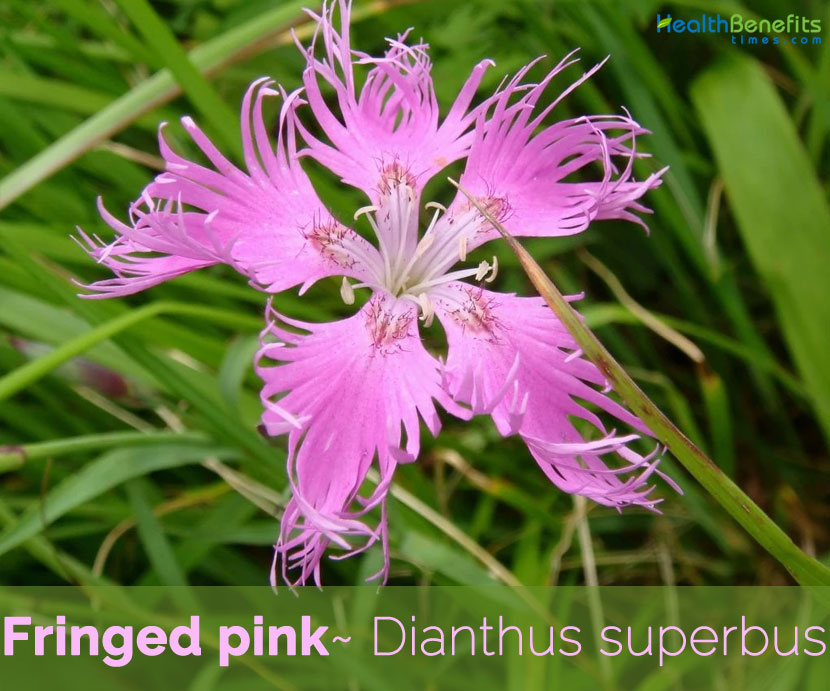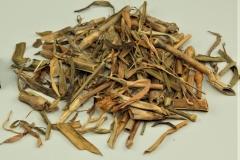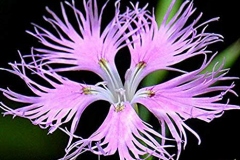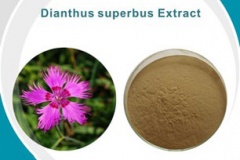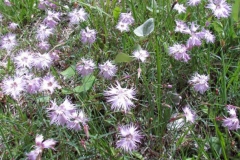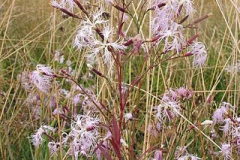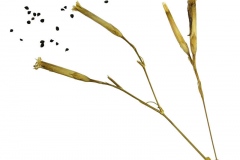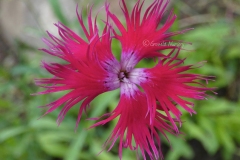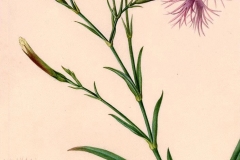| Fringed pink Quick Facts | |
|---|---|
| Name: | Fringed pink |
| Scientific Name: | Dianthus superbus |
| Origin | Europe |
| Shapes | Cylindrical capsule, equaling or slightly longer than calyx |
| Taste | Bitter |
| Health benefits | Beneficial for blood pressure, fevers, bacterial infections, cystitis, urinary stones, constipation, failure to menstruate, hemorrhoids, lumbricoid worms, venereal sores |
| Name | Fringed Pink |
|---|---|
| Scientific Name | Dianthus superbus |
| Native | Whole of Europe with the exception of the British Isles, West-Siberia, East Siberia, Sakhalin, Mongolia, China, Japan and Taiwan |
| Common Names | African cottom leafworm; Cotton leafworm, Egyptian cotton leafworm, Egyptian cotton worm, Mediterranean climbing cutworm, Meditteranea Brocade, Tobacco cutworm |
| Name in Other Languages | Azerbaijani: Parlaq qərənfil Bulgarian: Prevŭzkhoden karamfil (превъзходен карамфил), velikolepen karamfil (великолепен карамфил) Chinese: Qu mai (瞿麦) Croatian: Divotnik Czech: Hvozdík pyšný Danish: Strand-nellike Dutch: Prachtanjer English: Fringed pink, large pink, superb pink Estonian: Aasnelk Finnish: Pulskaneilikka French: Oeillet superbe, Œillet superbe, mignardise des prés, oeillet à lanières, oeillet à plumet German: Pracht-Nelke Greek: Díanthos megaloprepís (δίανθος μεγαλοπρεπής) Hungarian: Buglyos szegfű Italian: Garofano a pennacchio, Garofano superbo, garofano da pennacchio Japanese: Ezo-kawara-nadeshiko (エゾカワラナデシコ) Korean: Kkot sul pae raeng i kkot, sul pae raeng i kkot, kkochsulpaelaeng-ikkoch (꽃술패랭이꽃), sulpaelaeng-ikkoch (술패랭이꽃) Latvian: Krašna nelke Lithuanian: Puošnusis gvazdikas Northern sami: Riessanellet Norwegian: Silkenellik Polish: Goździk pyszny Romanian: Garoafe de munte Russian: Gvozdika pyshnaya (Гвоздика пышная) Serbian: Ibrišim karanfil (Ибришим каранфил) Slovak: Klinček pyšný, klinček pyšný pravý Slovene: Cudoviti klinçek Swedish: Praktnejlika, Pulskaneilikka Ukrainian: Hvozdyka harna (Гвоздика гарна) |
| Plant Growth Habit | Evergreen, loosely tufted herbaceous perennial plant |
| Growing Climates | Evergreen, loosely tufted herbaceous perennial plant |
| Soil | Easily grown in average, medium, well-drained soils in full sun. Prefers fertile, slightly alkaline, somewhat gritty loams with good drainage |
| Plant Size | 80 cm tall |
| Stem | Caespitose, erect, distally branched, glabrous, large jointed |
| Leaf | Linear-lanceolate, 5–10 cm long and 3–5 mm wide, sometimes glabrescent, mid vein prominent, base connate into a sheath, apex sharply pointed |
| Flowering season | June to September |
| Flower | Solitary or a few of them gather into panicle; tubular calyx is 2.7 to 3.7cm long; bracts are 4 to 6, broadly ovate, and about 1/4 of the calyx tube length; deeply cut fringed petals are brown purple or brown, and curly |
| Fruit Shape & Size | Cylindrical capsule, equaling or slightly longer than calyx, 4-toothed |
| Seed | Black, glossy, compressed ovoid, ca. 2 mm |
| Propagation | By Seed |
| Taste | Bitter |
| Plant Parts Used | Flowers, leaves, nectar |
| Season | Aug–Oct |
Plant Description
Fringed pink is a bushy short-lived, evergreen, loosely tufted herbaceous perennial plant that normally grows about 80 cm tall with decumbent stems below and branched upright stems above. The plant is found growing in wooded hills, forest openings and margins, grassy hillsides, meadows, mountain valley streams, river banks, dry meadows, sandy and gravelly river banks, shore meadows, rocky embankments, dry commons and roadsides. The plant can be easily grown in average, medium, well-drained soils in full sun. It also prefers fertile, slightly alkaline, somewhat gritty loams with good drainage. When planting grown plants, the lowest leaves on the plant should not be buried, and when cultivating, care should be taken not to damage the feeder roots that lie close to the ground surface. Stem is caespitose, erect, distally branched, glabrous, large jointed. Leaves are linear-lanceolate, 5 -10 cm long and 3–5 mm wide, sometimes glabrescent, mid vein prominent, base connate into a sheath and apex sharply pointed.
Flower and fruits
Flowers are solitary or a few of them gather into panicle. Tubular calyx is 2.7 to 3.7cm long; bracts are 4 to 6, broadly ovate, and about 1/4 of the calyx tube length; deeply cut fringed petals are brown purple or brown, and curly. Flowering normally takes place from June to September. Fertile flowers are followed by 4 toothed, cylindrical capsules, equaling or slightly longer than calyx.
Scentless flowers are also found in a variety of bright colors from pink and red, to lavender and white, often with dark purple eyes. These plants are very cold sensitive and require mulching to protect them from frost.
Traditional uses and benefits of Fringed pink
- Fringed pink, called Qu Mai in Chinese herbalism has been used in Chinese herbal medicine for over 2,000 years.
- Whole plant is a bitter tonic herb that encourages the digestive and urinary system, and also the bowels.
- It also lowers blood pressure, reduces fevers and controls bacterial infections.
- Little used on its own, it is often taken with Dan Shen (Salvia multiorrhiza) to induce menstruation.
- The plant is abortifacient, contraceptive, and diuretic, emmenogogue, ophthalmic, tonic and vulnerary.
- It is said to promote hair growth.
- Plant is taken internally in the treatment of acute urinary tract infections (especially cystitis), urinary stones, constipation and failure to menstruate.
- Externally, it is applied to skin inflammations and swellings.
- The leaves are used in the treatment of hemorrhoids, lumbricoid worms, venereal sores etc.
- The flowers are astringent, diuretic, hemostatic, resolvent and vulnerary.
- Research has shown that the flowers are the most markedly diuretic part of the plant.
- Old leaves can be crushed and used to clear the eyesight.
Culinary Uses
- Leaves, stems and tops are boiled, steeped in water and eaten as a potherb.
- Young plants are also eaten.
- Children suck the flowers for their sweet edible nectar.
- Fresh dianthus petals can be used to liven up salads, sandwiches and pies.
- Petals of the flowers, when crystallized, make beautiful decorations for cakes and pastries.
Precautions
- Avoid use during pregnancy as it causes uterine contractions.
- Excess use may cause toxicity.
- It should be avoided in cases of spleen-kidney deficiency.
- Over dosage of dianthus can cause prolonged contractions of the uterus.
References:
https://www.itis.gov/servlet/SingleRpt/SingleRpt?search_topic=TSN&search_value=823588#null
https://npgsweb.ars-grin.gov/gringlobal/taxonomydetail.aspx?id=13866
https://pfaf.org/user/Plant.aspx?LatinName=Dianthus+superbus
http://www.missouribotanicalgarden.org/PlantFinder/PlantFinderDetails.aspx?kempercode=a822
https://www.wikidata.org/wiki/Q161878
https://en.hortipedia.com/index.php?title=Dianthus_superbus&mobileaction=toggle_view_desktop
https://plants.usda.gov/core/profile?symbol=DISU12
https://davesgarden.com/guides/pf/go/37999/#b
http://www.theplantlist.org/tpl1.1/record/kew-2764999
http://www.plantsoftheworldonline.org/taxon/urn:lsid:ipni.org:names:153941-1
https://naturelib.net/plantae/dianthus-superbus/
https://gd.eppo.int/taxon/DINSU
https://practicalplants.org/wiki/Dianthus_superbus


